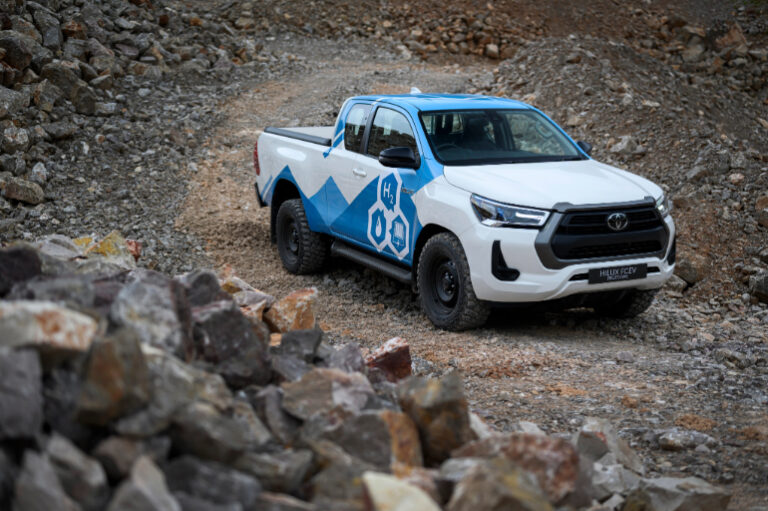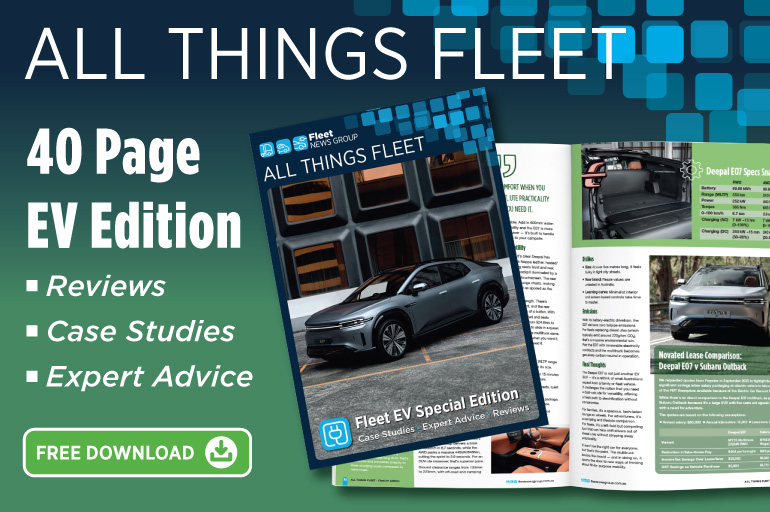Toyota has confirmed that a hydrogen fuel-cell electric HiLux (FCEV) will join its lineup in 2028, extending the brand’s multi-pathway strategy and reinforcing its belief that the road to zero emissions will be built on more than just battery-electric vehicles.
The announcement, made by Sean Hanley, Toyota Australia Vice President of Sales, Marketing and Franchise Operations, came as part of the brand’s broader product preview in Melbourne, where the company also revealed plans for a battery-electric HiLux in 2026.
Hanley said hydrogen would play a critical role in decarbonising the transport sector over the next decade, especially for vehicles that need long range, quick refuelling, and the ability to operate in remote or heavy-duty environments.
“The inclusion of an FCEV variant in 2028 reinforces this multi-pathway approach and is the result of Toyota’s commitment to hydrogen fuel-cell electric technology,” Mr Hanley said.
“I still believe in hydrogen. I still believe in fuel cell. Diesel will be around for a long time, but hydrogen will have a big future in Australia and in the automotive industry.”
For Toyota, this isn’t a sudden pivot — it’s a continuation of a philosophy that has guided the company for decades: introducing new technologies when the market is ready for them.
Hanley reflected on the launch of the Prius hybrid in 2001, a vehicle that was initially met with scepticism and sold in tiny numbers.
“When we launched the Prius in 2001, we could barely sell ten a month — and nine of those were dealer demos,” he joked. “But look where we are now. In 2025, around half of all Toyotas sold in Australia will be hybrids. It’s proof that the timing has to be right — it’s not about if, it’s about when.”
That message underlines Toyota’s long-term confidence in hydrogen. While battery-electric vehicles (BEVs) are now moving into the mainstream, the company sees hydrogen as the next wave — particularly for commercial fleets and industries where downtime is costly and infrastructure can be centrally managed.
Toyota has been trialling hydrogen vehicles in Australia for several years, including the Mirai sedan and a prototype hydrogen HiLux developed in the UK and tested under real-world conditions by fleets in Europe. The 2028 production version will build on this global experience and bring a hydrogen option to a vehicle category where electric range anxiety still looms large.
“Between 2035 and 2040, I believe hydrogen will become a mainstream technology,” Hanley said. “Just as hybrids were once dismissed as niche and are now normal, hydrogen will follow the same trajectory — it just takes time for consumer confidence, infrastructure, and policy to align.”
Toyota’s view is that fleets will lead that adoption, just as they did with hybrids. Businesses with structured operations and depot-based refuelling are the natural starting point for FCEV utes and trucks. With federal and state governments investing heavily in hydrogen hubs and refuelling corridors, the pieces are slowly falling into place.
For fleet operators, the hydrogen HiLux could eventually offer the same reliability and performance the nameplate is famous for — with zero tailpipe emissions and refuelling times measured in minutes, not hours.
Toyota’s approach may not be as headline-grabbing as all-in EV strategies from newer brands, but it’s consistent. The company isn’t trying to win the race to be first — it’s trying to be there for the long run, and to bring its customers along at the right pace.
As Hanley put it:
“The Prius showed us that being early isn’t enough. You have to be right — right product, right timing, right market. Hydrogen will have its moment, and when it does, Toyota will be ready.”
For Fleet Managers, that moment might be closer than it seems. With a BEV HiLux arriving in 2026 and a hydrogen HiLux following in 2028, Toyota is sending a clear message: the powertrain of the future won’t be one-size-fits-all — but the HiLux will still be part of it.







